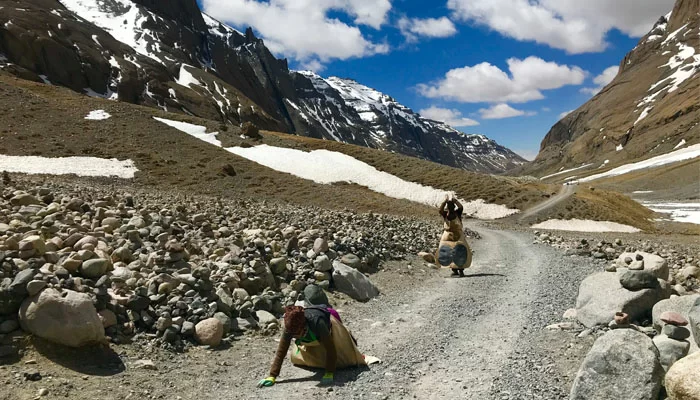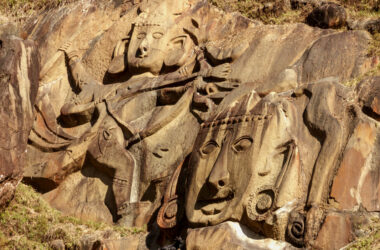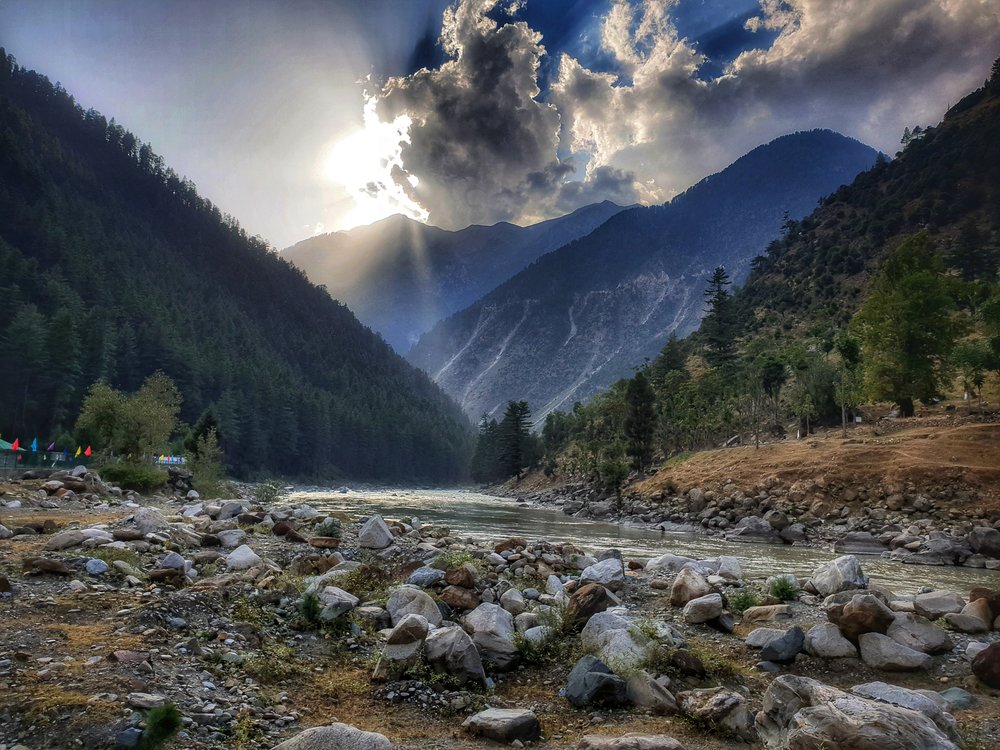Kailash Mansarovar Yatra is a pilgrimage of immense significance for devotees of various religions, especially Hindus, Buddhists, Jains, and Bon followers. This spiritual journey takes place in the remote and awe-inspiring Himalayan region, offering a unique opportunity for seekers to connect with the divine and experience serenity amidst the pristine natural beauty. In this article, we will delve into the details of the Kailash Mansarovar Yatra in 2023, exploring its significance, its journey, and the transformative experiences it offers.
Outline
- Introduction
- Significance of Kailash Mansarovar
- History and Mythology
- Preparations for the Yatra
- The Journey Begins: Route and Logistics
- Spiritual Significance of the Yatra
- Mount Kailash: The Abode of the Gods
- Mansarovar Lake: The Sacred Source
- Cultural Exploration: Tibetan Influence
- Challenging Terrains and Physical Demands
- Accommodation and Facilities
- Safety and Medical Considerations
- Best Time to Visit
- Transformative Experiences: Testimonials from Pilgrims
- Conclusion
Significance of Kailash Mansarovar
Kailash Mansarovar holds immense spiritual significance across different faiths. Hindus believe that Lord Shiva, the supreme deity, resides on Mount Kailash, making it one of the holiest places on Earth. Buddhists associate the mountain with Guru Rinpoche (Padmasambhava), who brought Buddhism to Tibet. Jains believe that Rishabhadeva, the first Tirthankara, attained spiritual liberation here, while Bon followers consider Mount Kailash as the abode of their founder, Tonpa Shenrab.
History and Mythology
Kailash Mansarovar is steeped in ancient history and mythology. It is believed that the yatra dates back thousands of years, with references found in Hindu epics like the Ramayana and Mahabharata. The journey holds immense spiritual significance due to its association with mythical stories, including the churning of the cosmic ocean and the creation of Mansarovar Lake.
Preparations for the Yatra
Embarking on the Kailash Mansarovar Yatra requires careful preparations. Pilgrims need to obtain the necessary permits, ensure physical fitness, and undergo medical check-ups. They must also pack essential items such as warm clothing, sturdy footwear, altitude sickness medication, and personal supplies. Acclimatization is crucial, and a positive mindset is necessary to overcome the challenges that may arise during the journey.
The Journey Begins: Route and Logistics
The Yatra begins from various entry points, including Kathmandu in Nepal and various Indian cities like Delhi and Lucknow. From there, pilgrims travel by road to the China-Nepal border, and then onward to the sacred sites. The journey involves crossing rugged terrains, high mountain passes, and braving adverse weather conditions. Adequate arrangements are made for transportation, accommodation, and meals to ensure the comfort and safety of the pilgrims.
Spiritual Significance of the Yatra
The Kailash Mansarovar Yatra is not just a physical journey; it is a spiritual odyssey that offers pilgrims an opportunity to introspect, seek inner transformation, and connect with the divine. The serene surroundings, the majestic mountains, and the tranquil Mansarovar Lake create an ambiance conducive to meditation, reflection, and prayers. Many pilgrims describe a sense of inner peace, heightened spirituality, and a deep sense of reverence during the yatra.
Mount Kailash: The Abode of the Gods
Mount Kailash, with its pyramid-like shape and snow-capped peaks, is a sight to behold. Considered sacred by multiple religions, this magnificent mountain is believed to be the Axis Mundi, the cosmic center of the universe. Pilgrims perform the parikrama, circumambulation of the mountain, as a mark of devotion and reverence. It is said that completing the parikrama washes away sins and brings spiritual liberation.
Mansarovar Lake: The Sacred Source
Mansarovar Lake, situated at the foot of Mount Kailash, is a crystal-clear body of water with deep spiritual significance. Pilgrims take a dip in its holy waters, believing that it cleanses the soul and paves the way for spiritual awakening. The serene ambiance, the breathtaking views of the surrounding mountains, and the shimmering reflections on the lake’s surface create a profound sense of awe and tranquility.
Cultural Exploration: Tibetan Influence
During the yatra, pilgrims also get the opportunity to explore the rich Tibetan culture and traditions. Tibetan Buddhism, with its colorful monasteries, prayer flags fluttering in the wind, and the sound of chanting monks creates an enchanting atmosphere. Pilgrims engage with local communities, learn about their customs and rituals, and gain insights into the unique spiritual practices that have been passed down through generations.
Challenging Terrains and Physical Demands
Undertaking the Kailash Mansarovar Yatra requires physical endurance and mental resilience. The journey involves trekking at high altitudes, often above 5,000 meters, which can pose challenges due to reduced oxygen levels. Pilgrims need to be physically fit and mentally prepared to overcome the demanding terrains, steep ascents and descents, and unpredictable weather conditions.
Accommodation and Facilities
Several guesthouses, tents, and lodges are set up along the Yatra route to provide accommodation to the pilgrims. Basic facilities like clean beds, hygienic food, and restroom facilities are available, although the amenities may be simple. It is advisable to carry personal essentials and be prepared for limited connectivity and minimal access to modern conveniences.
Safety and Medical Considerations
Safety is of utmost importance during the yatra. The pilgrimage is organized by government authorities who take necessary precautions to ensure the well-being of the pilgrims. Medical facilities and emergency services are available at designated points along the route. However, it is vital for pilgrims to disclose any pre-existing medical conditions and follow the guidance of the organizers to mitigate risks and ensure a safe journey.
Best Time to Visit
The ideal time to undertake the Kailash Mansarovar Yatra is during the summer months of May to September when the weather is relatively mild. The snow starts melting, making the paths more accessible. The monsoon season should be avoided due to the risk of landslides and heavy rainfall. Pilgrims should check the specific dates and consult with tour operators to plan their journey accordingly.
Transformative Experiences: Testimonials from Pilgrims
Countless pilgrims have embarked on the Kailash Mansarovar Yatra and returned with profound experiences that have touched their lives in unimaginable ways. Many describe a deep sense of peace, spiritual awakening, and a feeling of oneness with the divine. The journey serves as a reminder of our inherent spirituality and the universality of human faith, fostering a sense of harmony and goodwill among people from diverse backgrounds.
Conclusion
The Kailash Mansarovar Yatra is not merely a physical expedition; it is a sacred pilgrimage that transcends boundaries and unites individuals in their quest for spiritual enlightenment. It is a transformative journey that allows pilgrims to connect with their inner selves, experience the divinity of nature, and find solace in the depths of the Himalayas. The Yatra is a testament to the power of faith, devotion, and the enduring human spirit.
Similar Articles
- Packing List for Kailash Mansarovar Trek
- Travel Tips for Kailash Mansarovar
- Tales of Kailash Mansarovar
FAQs
How long does the Kailash Mansarovar Yatra take?
The duration of the yatra varies, but it typically takes around 15 to 20 days to complete the entire journey, including the parikrama.
Is the Kailash Mansarovar Yatra physically demanding?
Yes, the yatra involves trekking at high altitudes and challenging terrains. It requires a good level of physical fitness and mental preparation.
Can people of all religions undertake the Kailash Mansarovar Yatra?
Yes, people of all religions are welcome to undertake the yatra. The pilgrimage site holds significance for Hindus, Buddhists, Jains, and Bon followers.
Are there age restrictions for the Yatra?
While there is no strict age limit, participants should be in good health and able to handle the physical demands of the journey.
How can I prepare myself for the Kailash Mansarovar Yatra?
It is essential to engage in regular physical exercise, focus on cardiovascular fitness, and consult a healthcare professional before embarking on the yatra. Mental preparedness and a positive mindset are equally important.









